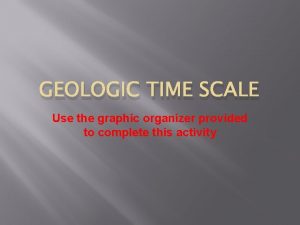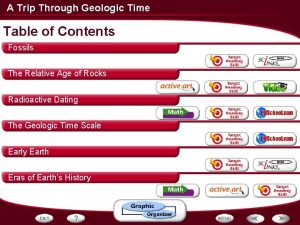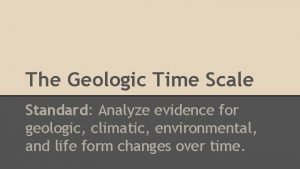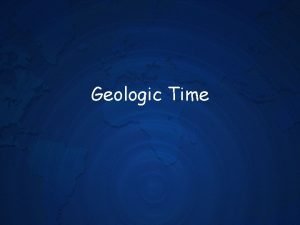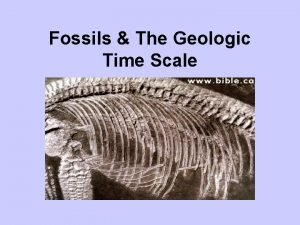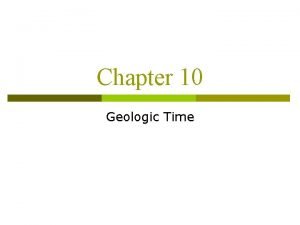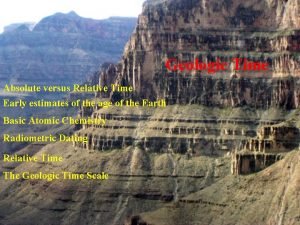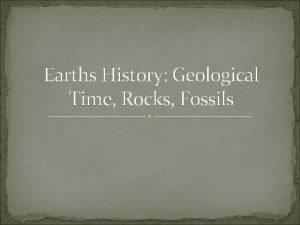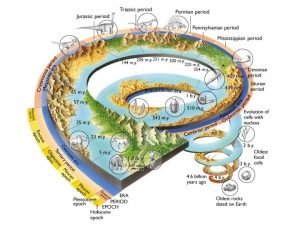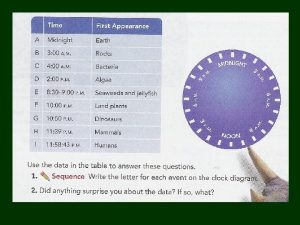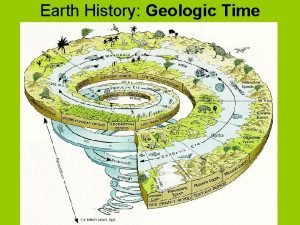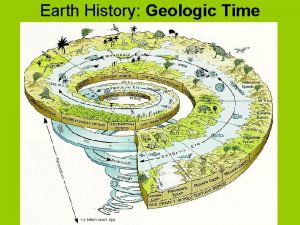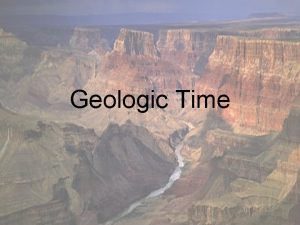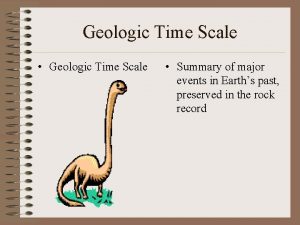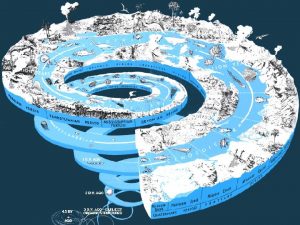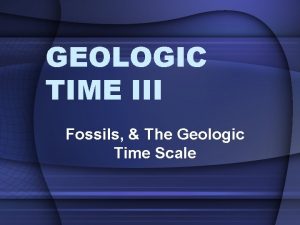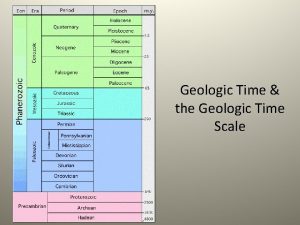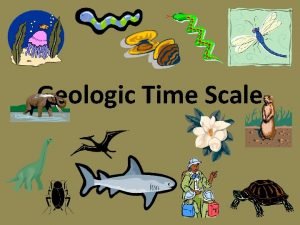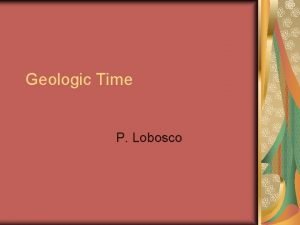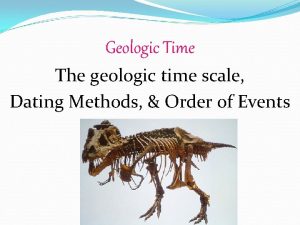GEOLOGIC TIME SCALE Use the graphic organizer provided

















- Slides: 17

GEOLOGIC TIME SCALE Use the graphic organizer provided to complete this activity

Draw an arrow pointing up on your graphic organizer like this Paleozoic Era Youngest Label it oldest to youngest Oldest

Fill in the major events that occurred in each period

Cambrian Shallow seas cover most of the land. Explosion of life in the sea. Trilobites, Mollusks and other shelled animals live in these sea. Images of trilobites. Do not draw

Ordovician Warm shallow seas still cover the earth. First animals with backbones appear.

Silurian Early continents collide. Coral reefs appear. Basic land plants appear.

Devonian Seas rise and fall over North America. Age of Fishes First amphibians reach land (frogs) Color the box with the word Devonian with a color of your choice. This period is important for the appearance of fish.

Carboniferous North America and Europe are tropical. First reptiles appear Insects are plentiful.

Permian Pangea forms (supercontinent) Reptiles are dominant. Mass extinction of marine animals, trilobites disappear. Signals the end of the Paleozoic era Color the box with the word Permian with a color of your choice. This period is important for the mass extinction of marine life.

Label it oldest to youngest Oldest Mesozoic Era Youngest Cenozoic Era Draw an arrow pointing up on your graphic organizer like this

Mesozoic Era Under the word Mesozoic, write the word “Dinosaur” This era is the Age of Reptiles

Triassic Pangea is dominant land formation Age of Reptiles Dinosaurs appear Evergreen trees ore dominant (Pines, Ferns and Palm trees)

Jurassic North America separates from Africa and South America. Largest dinosaurs thrive. Birds appear Flying reptiles appear Color the box with the word Jurassic with a color of your choice. This period is important for the appearance of birds.

Cretaceous Dinosaurs dominate First flowing plants appear Continents move toward their present day positions Mass extinction at the end causes the disappearances of many land marine life forms, including the dinosaurs

Cenozoic Era Under the word Cenozoic, write the word “Mammal” This era is the Age of Mammals

Tertiary Age of Mammals begins Modern groups such as horses, elephants and primates appear. Ancestors of humans appear Color the box with the word Tertiary with a color of your choice. This period is important for the appearance of mammals.

Quaternary Thick glaciers appear and disappear. Great mammals thrive but die when the Ice Age ends 10, 000 years ago. Modern humans evolve about 10, 000 years ago. Under the word Quaternary, write “current age” We live in the quaternary period of the Cenozoic Era.
 Geological time scale graphic organizer
Geological time scale graphic organizer Compare geologic time with the geologic column.
Compare geologic time with the geologic column. Geological time scale graphic organizer
Geological time scale graphic organizer How is the geologic time scale organized
How is the geologic time scale organized Geologic time scale in a calendar year
Geologic time scale in a calendar year Geologic time scale animals
Geologic time scale animals Geologic time scale drawing
Geologic time scale drawing Moth scale
Moth scale Nooa
Nooa Facies
Facies Silurian period
Silurian period Geologic time scale
Geologic time scale Geologic time scale drawing
Geologic time scale drawing Brainpop geologic time
Brainpop geologic time 4 divisions of geologic time
4 divisions of geologic time Geologic time
Geologic time What is the longest subdivision in geologic time
What is the longest subdivision in geologic time Chapter 12 geologic time
Chapter 12 geologic time
